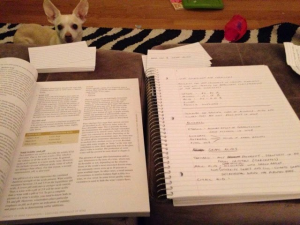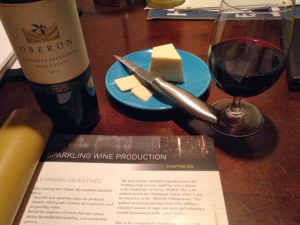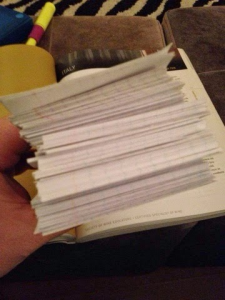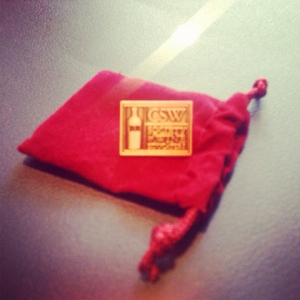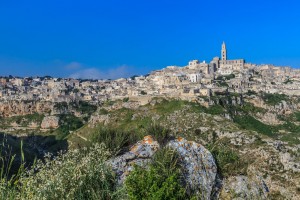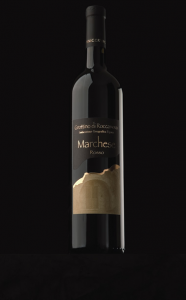Today we have a guest post from Joey Casco, CSW. I read Joey’s story about how he studied for the CSW while balancing a full-time job and a family on his blog The Wine Stalker and liked it so much I asked him if we could re-print it here. I hope you find it as motiviating as I did! Read on for Joey’s take on how to pass the CSW on the first try.
Today I will be sharing the experience I had with studying for and taking the CSW test. I also hope that it helps those who are currently preparing or planning on taking the test in the future.
I received the Society of Wine Educators Certified Specialist of Wine Study Guide in October, 2013. I had already been reading up and trying to get a head start for some time before hand but when the book actually arrived I had a sinking feeling in my stomach. I had until mid-January to absorb the crap out of this book.
Way back when I was in school I was a C average student. I got A’s and B’s in the subjects I loved and D’s and F’s in the subjects I just couldn’t connect with. Because of this I had to pass my final science test to even graduate high school. I passed it by one point. Which is weird, because a few years after high school I became a complete science nerd. Go figure.
Outside of school I’ve always, always over-achieved at the things I’m passionate about. This isn’t just a hobby, though. This particular passion is wine, and that passion has brought me to the lucky position of being a wine professional. This is how I earn a living. So this particular obstacle that I now was determined to overcome had a very serious motivation… FAMILY. I’m now 34 and married with a three year old daughter. This certification would put letters at the end of my name for life and help the financial future of my family. No pressure, right?
The CSW has a 55% pass rate average. That’s kind of scary. However, this could be because some distributors and companies make it mandatory for certain employee positions. Wine might not be that person’s thing so the material might not hold their interest, or they might be starting from absolutely nothing. It’s a tall order to become a wine specialist when you don’t even know the grapes of Bordeaux yet. So there was some comfort in knowing that I’ve been a wine guy for quite some time.
I started studying hardcore. Immediately. Highlighting the Study Guide and rewriting pretty much the entire book into notes in an insanely organized notebook. Being pretty
used to dealing with my own A.D.D. since I’ve had it, ya know, my entire life, I’ve found
that if I’m focused on being perfectly, psychotically organized I’m also focused on the material… and absorbing it.
See those tabs? It was separated by chapter with the smaller chapters together in broader topic like South America. If I made a mistake, whether it was spelling or just a screw up, I’d force myself to restart the whole page. Yeah, it was OCD-mania.
I planned to be finished with the Study Guide the first few days of January by taking two weeks per 75 pages. The first week I’d do the whole reading, highlighting, notebook thing and the second week I’d review and do flash cards just on those 75 pages. Then move on.
I did this every night from 10 pm to 3 am at the kitchen table. The Sirius Satellite Radio “Spa Channel” would be playing in the background because it was “music” that wouldn’t distract me. I needed to focus, not start singing along to the Foo Fighters. I’d be at work anywhere from 6 am to 8 am the following day so I wasn’t getting much sleep. Sunday was my only day off from studying because a guy needs to watch Boardwalk Empire and The Walking Dead, right?
I finished the first pass of the book on January 5th. Around this time we learned that the test would take place on March 27th instead of mid-January. A few more months of preparation? Yes, please! I put all of my focus onto the website like I had planned but with less haste in reading speed.
At this point I made possibly the most important decision I made during this whole thing… I created a highlight system for the study guide. My highlights from the first pass were yellow. What good would it be if I highlighted the things I came across on the online quizzes yellow too? Everything would just be yellow. I’d have an entire book that’s
highlighted yellow with things I now know and things I still need to know. That’s not helpful at all.
My highlight system went like this:
Yellow (yellow) – First pass. It turns out it was pretty much A LOT of basic / broad ranging stuff I didn’t know yet. It didn’t seem basic at the time but it becomes just that. This is, after all, for Specialists of Wine. Basic knowledge for this is pretty advanced anywhere else.
Orange – It was suggested by mentors and others that I know it.
Green – Things that came up on the website / online quiz that I didn’t know yet.
Blue – Final pass. Really in-depth stuff that was too advanced for me (or just too much information) to get the first time around but I now could handle. Blue was also used for completely obscure things they might slip in.
These colors were also used on my flash cards. In the upper left hand corner of the flash card I put the number of the chapter and highlighted that number the appropriate color. That way I could see the importance of knowing the answer and why. If it was orange it very well could be on the test. If it was green it was on a quiz and thus could be on a test. And if it was yellow and I was having a problem with it… well, I better get it together on that one right away because I should know that one by now.
The website was invaluable. If I recall correctly it took me about two weeks to thoroughly read the entire website material, pass the quizzes, and identify what was also in the Study Guide. That last part is important because if it’s not in the Study Guide then it’s not on the test.
After all of that it was time to do a final pass in the Study Guide, pinpoint the things I feel I should know that I hadn’t memorized yet and the really obscure stuff that might be on the test to trip us up, and then focus on maps aaaaaand… FLASH CARDS!!!!
Flash cards are important. Reading something over and over again does jack squat. You need to challenge your brain to retrieve that information. Don’t believe me? Read this.
The great thing about flash cards is you can use them while doing almost anything. Like watching The Little Mermaid for the millionth time, having a Princess tea party, cooking Mac and Cheese, you get the point.
The test was set for March 27th and the two weeks before the test I was burnt out. I didn’t want to play anymore. I’d look at the cover of the book and go “uuuuuugh”. I’d start using the flashcards and just not be feeling it. Not much of anything got done study-wise those two weeks. I just wanted it to be over. I wanted to play NHL 13 and actually go to bed at a normal hour for once. I had gone full bore at this thing for so long and I didn’t think I could learn much more. It wouldn’t have done me any good.
On the day of the test, myself and my peers headed off Cape Cod to the test location. I was nervous and wanted to cram on the ride up. My study pal, Angela Busco , ever the optimist and to whom I owe tremendously, told me that I’ve got it in the bag and to just relax. So I kept my hands off of the material. There was no relaxing.
The test is an hour and there are 100 multiple choice questions. You can write notes on the question sheet but not on the answer card. I skipped five questions that I was unsure of so I could come back to them after I answered the rest. However, whenever I did that I’d forget to leave that questions spot empty on the answer card and I’d fill it with the answer to the next question. So I had to erase it and fix it (and the following ones too) when I saw the numbers weren’t aligning. I was completely finished around the 40 minute mark and began to read the questions again. I had planned to take the whole hour and keep going over it to make sure I had everything right, but I just couldn’t do that. Second guessing yourself is the worst thing you can do. So the finished test went into the folder and was turned in.
I couldn’t eat that morning from the stress but now I was hungry. All I had was a few dollars on me and McDonalds was right down the street so we went there and talked about the test. Note to self: McDonalds is always a bad idea even if it’s the closest option.
After the test I couldn’t sleep for three nights. All the questions kept popping back up in my head and I was haunted by the questions I had since learned I answered wrong. What if I didn’t fill in the envelope right and they fail me for not following instructions? What if all those dots I had to erase actually registered and completely messed my right answers up? I knew pretty quickly by talking to the others that there was one question that I knew the answer to but got wrong because I read it wrong, and two others that my first-thought answer was right but I ended up changing. What if there was a bunch of those? It all was getting in my head. I was a mess.
On April 8th, a pretty hectic day all in itself, a Certified Specialist of Wine pin arrived in the mail. It came with a certificate saying that I am now a Certified Specialist of Wine. It also came with a letter saying that I scored a 93, meaning I only got 7 questions wrong out of 100. My mother was there when I got it. I gave her a big bear hug and lifted her up and started jumping around. Literally while I was doing this I got a text from Angela saying she just got her results back and she had passed.
I really can’t measure how honored I am to be recognized by an organization like the SWE. I worked my b*** off for six months and it was entirely worth it. Every tired minute. Just the learning experience alone was a tremendous opportunity. That opportunity was given to me by my employer, Luke’s of Cape Cod (of which I am the Fine Wine manager of the Dennisport location). I’m already eternally grateful to them for a number of things and this adds one more.
If you’re currently studying for the CSW, here’s my advice to you:
- Color-code your highlights to learn in layers.
- Make lots of flash cards and use them ALL THE TIME.
- Use the website but don’t rely on it.
- Don’t second guess yourself.
- No McDonalds.
Good luck!
Our Guest Author, Joey Casco, CSW, is the Fine Wine Manager of Luke’s of Cape Cod. A proud new CSW, he may be reached at his blog, The Wine Stalker and on Twitter. We’d like to congratualate him on his excellent CSW Score of 93, and wish him luck on his next project, as he prepares to tackle the CSS!
Click here to return to the SWE Website.
